How to write a CV – tips for presenting yourself
Find out how to write a CV to present your experience in the most appealing way for the roles you are applying for.
How to write a CV
Find out how to create a CV to present your skills and experience to employers. The purpose of a CV is to help you stand out within the application process and be offered the chance to interview.
What is a CV?
CV is an abbreviation for “curriculum vitae” which is Latin for “course of (one's) life” – the term is used to describe a written summary of a person's career, qualifications, and education.
Why do you need to write a CV?
A CV is the first step of applying for a job and making yourself known to a potential employer. Your CV summarises your skills, qualifications and experience in relation to the role you are applying for and shows a potential employer why they should consider you for a role.
Having an up-to-date CV to hand means you are prepared to apply for new roles when you see them come up. You should update your CV to make it applicable for different roles and types of work.
Top tips for writing a CV
• Start with your most relevant experience first
• Give specific examples of skills and responsibilities in action
• Highlight achievements and how you contributed to successful outcomes
• Focus on highlighting transferrable skills for less relevant experience
• Ask someone from the industry you are applying to give you feedback
• Get a careers adviser or recruitment specialist to give you feedback
• Double check the spelling, grammar, and punctuation
• Don’t over complicate the design and formatting
• Save your CV as a PDF file for sending
What type of CV do you need?
It’s important to make sure your CV is suited to the role you are applying for and your experience within this industry or career.
Using the relevant format for the job you're applying for, and your circumstances, ensures you present your experience, skills and qualifications in the clearest way.
Chronological CV – this is the traditional format for a CV where you list your experience and skills in order by the most recent. This format is useful if you have experience in similar roles and want to show your career progression so far. If you have any career gaps, these will be obvious.
Skills-based or functional CV – this format highlights your skills and qualities first and is suited to those changing careers or who may have gaps in their employment history. If you’ve had a series of short-term jobs, you can group related skills and experience together for emphasis.
Academic CV – to apply for research and teaching posts in academia, the CV format is usually much longer and contains detailed information about research you have undertaken as well as your experience and employment history.
Creative industries CV – some applicants design highly creative CVs with custom styling and layouts to stand out when applying for creative roles. A creative CV may help you demonstrate your design skills and creative approach alongside listing your relevant experience.
How to layout a CV
A CV should ideally be kept within 2 sides of A4 and structured to immediately present your most relevant skills and experience. Your name and contact information appear at the top of the page, along with a short introduction about yourself and the role you are applying for.
Your CV is personal to you, but it also needs to be tailored to the job role you are applying for. Look over the job description and reference any specific skills and experience you have. If you can personalise it around the company or organisation you are applying to, even better.
Make sure you include:
• Personal details
• Qualifications and grades
• Previous jobs (with employment dates and references)
• Volunteering experience
• Training courses and certifications
If you're sharing your CV to leave on file or the role you’re applying doesn’t have a published description, looking at similar job profiles helps you understand the skills you’ll need to reference.
Contact details
Your name is the first thing to appear at the top of page, along with your phone number and email address underneath (make sure you have a professional sounding email address).
If you have a portfolio or professional website, include this. You could also add a link to a professional networking profile, such as LinkedIn.
Personal profile
This is a few short lines just under the contact details. Your personal profile is a chance to say why you’re the right person for the job and tell employers why they should consider you for the role.

Work history
Your work history gathers the paid jobs, work experience, internships, and voluntary roles you’ve had. These should be ordered by the most relevant or recent first, depending on the type of CV. You may want to group less relevant, similar experience to allow more room to emphasise the most relevant experience and roles.
Make sure you include:
• The job title
• The name of the business or employer
• Employment dates
• Role, responsibilities and achievements
When describing what you learnt and accomplished within a role, make sure to reference the responsibilities you had and how your actions contributed to successful outcomes.
Use real life examples rather than summarising generally what you did in a role. The STAR method is a helpful way to explain things.
1. Situation – explain the situation
2. Task – what was the task at hand
3. Action – what action did you take
4. Result – what happened as a result and what did you learn
For instance, perhaps you were in a situation with a difficult customer where you had to respond to their complaint about a product. You found the problem with the product, offered the customer a replacement, and the customer left a positive review and repurchased from the company.
Education history
If you are early in your career or don’t have much work experience, your education experience would go above your working history. Otherwise, it can come after your employment details.
Make sure you include:
• Qualifications and grades
• Where you studied (names of schools, colleges, and universities)
• Dates you attended
Should you include hobbies and interests in a CV?
It’s not essential to include hobbies and interests in your CV, but it can be useful if they display skills relevant to the role, particularly if you don’t have much work experience to include. When mentioning hobbies or interests, focus on how they demonstrate relevant skills for the job.
For instance, playing a sport might show you work well with others, painting could show your creativity, or acting in a drama club may have helped you become a confident public speaker.
Do you have to include references in a CV?
It’s not necessary to include the details of your references within your CV. You can mention that they are available on request and the employer or recruiter can ask for them should you get to the next stage of the recruitment process.
Would you like more advice on creating a compelling CV? Please call C+K on 01484 242000 or email enquiries@ckcareers.co.uk.
Are you unsure what jobs to apply for? Talking to a careers adviser provides the chance for you to discuss your skills, interests, and ideas you might have.







